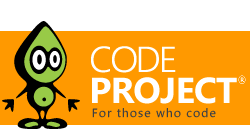Everything / Languages / VB10
VB10
VB10
Great Reads
by Mr. xieguigang 谢桂纲
Object-oriented evaluator of the mathmatics expression
by Sander Rossel
Journey to the center of the .
by gndzero
A threaded application to identify if system VB6 OCX files are exploitable and generate a batch file to register updated OCX controls.
by DaveyM69
A complete overview and implementation of SNTP from a client perspective.
Latest Articles
by Mr. xieguigang 谢桂纲
Object-oriented evaluator of the mathmatics expression
by Sander Rossel
Journey to the center of the .
by gndzero
A threaded application to identify if system VB6 OCX files are exploitable and generate a batch file to register updated OCX controls.
by DaveyM69
A complete overview and implementation of SNTP from a client perspective.
All Articles
by Mr. xieguigang 谢桂纲
Object-oriented evaluator of the mathmatics expression
by Sander Rossel
Journey to the center of the .
by gndzero
A threaded application to identify if system VB6 OCX files are exploitable and generate a batch file to register updated OCX controls.
by DaveyM69
A complete overview and implementation of SNTP from a client perspective.
by Terence Wallace
The primary purpose of this article is to provide quality sample source code for VB.
by Drag0nHunter
ASM.
by Ron Schuler
ASP.
by Mr.PoorEnglish
After simple introduction the Article turns to less known,
by Keith L Robertson
Write synchronous-looking asynchronous methods without async/
by Qaiser_Iftikhar
An article to demonstrate how to calculate system idle time without installing any system wide keybaord/
by Scott Rippey
A string template method that allows you to fill a string with data.
by David Vanson
A progress bar control you can customize
by junnark
You're using a GridView web control to list records from a particular data source and you want a delete functionality for each row of data.
by Mr. xieguigang 谢桂纲
A simple and easy way to develop an application plugin
by icemanind
Create a hand made parser in VB.
by BSalita
Sample program shows how to embed controls in a WPF DataGrid using VB.
by Kenneth Haugland
Evaluation of complex and real numbers from string
by Robert Gustafson
I've created an enhanced version of the Extended RichTextBox created by Razi Syed.
by Gregory Gadow
Learn how to extend the Forms.
by drummerboy0511
Learn how to extend the My namespace in Visual Basic 2005 /
by Richard Atkins
Create a fluid,
by NickThissen
Change the colors used to render Menu-,
by Vijay Tanwar
.
by Graeme_Grant
This article focuses on developing an MVVM compatible ListBox-to-ListBox drag/
by system-zone.co.uk
An update to my original generic record selector.
by AdamNThompson
This class sorts objects using Generics and LINQ Lambda Expressions.
by Mr. xieguigang 谢桂纲
Introduction to "GENOME-IN-CODE" Project about virtual cell modelling the bacteria Xcc 8004,
by Jesse Fatherree
This simple function will programatically enumerate all properties and values in any WMI class.
by SSDiver2112
A custom Panel that creates a glow effect around a child control or a drop shadow when it receives focus
by gndzero
A utility to prevent workstations from going to sleep (during long running processes).
by Sander Rossel
Creating custom collections from IEnumerable(T) to IDictionary(T) and everything in between!
by Alexandros Pappas
Example of a self hosted WCF service over HTTPS with transaction
by Fasttimes
How to publish a ClickOnce application without using the Visual Studio IDE,
by Peki.HR
Simple and efficient way to localize MVC websites using routes
by jpaulino
This article shows the basic steps of creating a report,
by Member 7656529
A review of the book Microsoft Visual Studio LightSwitch Business Application Development.
by Mr. xieguigang 谢桂纲
Mathematical method of S-system equation to simulate a biochemical network system
by Damon88
A class which enables the user to Drag the form by clicking Form's Surface
by chad_ross
Class for automating the handling of Most Recently Used files in a MenuStrip.
by Terence Wallace
Ordermate can be used as a basic example of utilizing the XMLSerializer class to automate the creation of invoice forms.
by lipinho
VB.
by kirkaiya
A very simple,
by Prefict
If you hate naming controls in the footer row of your gridview to do an insert,
by konikula
Inherited ListView which enables user to order multiple items by mouse,
by My Bones
A simple way to share data across your diffrent applications.
by pdoxtader
A comparison of these two free zip libraries,
by Mr.PoorEnglish
Two WinForms controls that help to develop compact and flexible user interfaces.
by Terence Wallace
TexasQuest is a 2D side scroller platform game similiar to Super Mario
by Bangon Kali
This component will be used as a text box for automatically formatted currency values.
by rspercy65
Addiction time.
by Mr.PoorEnglish
what is "typed" on typed Dataset,
by gndzero
Utility to check for logged on user prior to using Remote Desktop Connection.
by Mr. xieguigang 谢桂纲
Easy way to map the table in the mysql database.
by Sander Rossel
An introduction to knowing what NOT to do.
by Vladimir Svyatski
How to correctly draw WinForms Tab Control with bottom alignment when visual styles are enabled
by Abhishek Sur
Gives an introduction of how to create SQL CLR managed objects in SQL server.
by Joshi, Rushikesh
Create a customized project template,
by Mr.PoorEnglish
Understanding Tabcontrol right enables a lightweigth solution
by jpaulino
XML Literals allow you to use XML syntax in your code.

